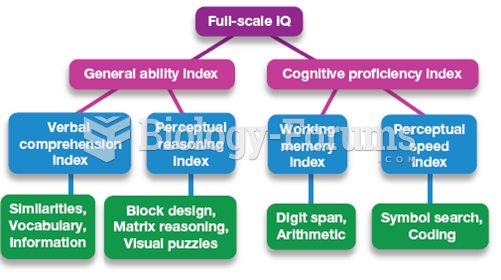Answer to Question 1
Francis Galton (18221911) believed that intelligence is a function of psychophysical abilities. For several years, Galton maintained a well-equipped laboratory where visitors could have themselves measured on a variety of psychophysical tests. These tests measured a broad range of psychophysical skills and sensitivities. One example was weight discrimination, the ability to notice small differences in the weights of objects. Another example was pitch sensitivity, the ability to hear small differences between musical notes. A third example was physical strength. One of the many enthusiastic followers of Galton attempted to detect links among the assorted tests. He hoped such links would unify the various dimensions of psychophysically based intelligence. But he detected no unifying associations. Moreover, the psychophysical tests did not predict college grades. Thus, the psychophysical approach to assessing intelligence soon faded almost into oblivion. Nevertheless, it would reappear many years later in a somewhat different guise.
Answer to Question 2
Initially, when Binet and Simon developed their intelligence test, they were searching for a way to compare the intelligence of a given child with that of other children of the same chronological (physical) age. For their purposes, they sought to determine each child's mental agethe average level of intelligence for a person of a given age. Thus, a mental age of 7 refers to the level of thinking reached by an average 7-year-old child. Mental ages worked just fine for comparing a given 7-year-old child with other 7-year- old children, but the use of mental ages made it difficult to compare relative intelligence in children of differing chronological ages.
William Stern (1912) suggested instead that we evaluate people's intelligence by using an intelligence quotient (IQ): a ratio of mental age (MA) divided by chronological age (CA), multiplied by 100 . This ratio can be expressed mathematically as follows: IQ = (MA/CA)(100). Thus, if Joan's mental age of 5 equals her chronological age of 5, then her intelligence is average and her IQ is 100 because (5/5)(100) = 100 . When mental age exceeds chronological age, the ratio will lead to an IQ score above 100, and when chronological age exceeds mental age, the ratio will lead to an IQ score below 100 . Intelligence scores that are expressed in terms of a ratio of mental age to chronological age are termed ratio IQs.
For various reasons, ratio IQs proved inadequate. For example, increases in mental age slow down at about age 16 years. An 8-year-old child with a mental age of 12 years is pretty smart. However, do you feel sure that a 40-year-old adult with a mental age of 60 is similarly intelligent, although the ratio IQ is the same for the 8-year-old child and the 40-year-old adult? What does a mental age of 60 mean? In the 21st century, psychologists rarely use IQs based on mental ages. Instead, researchers have turned to measurement comparisons based on assumed normal distributions of test scores within large populations. Scores based on deviations from the middle score in a normal distribution of scores on a test of intelligence are termeddeviation IQs.







